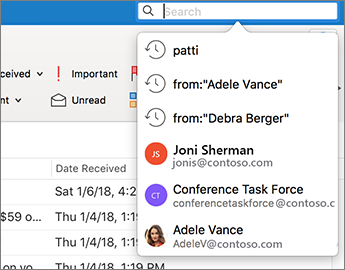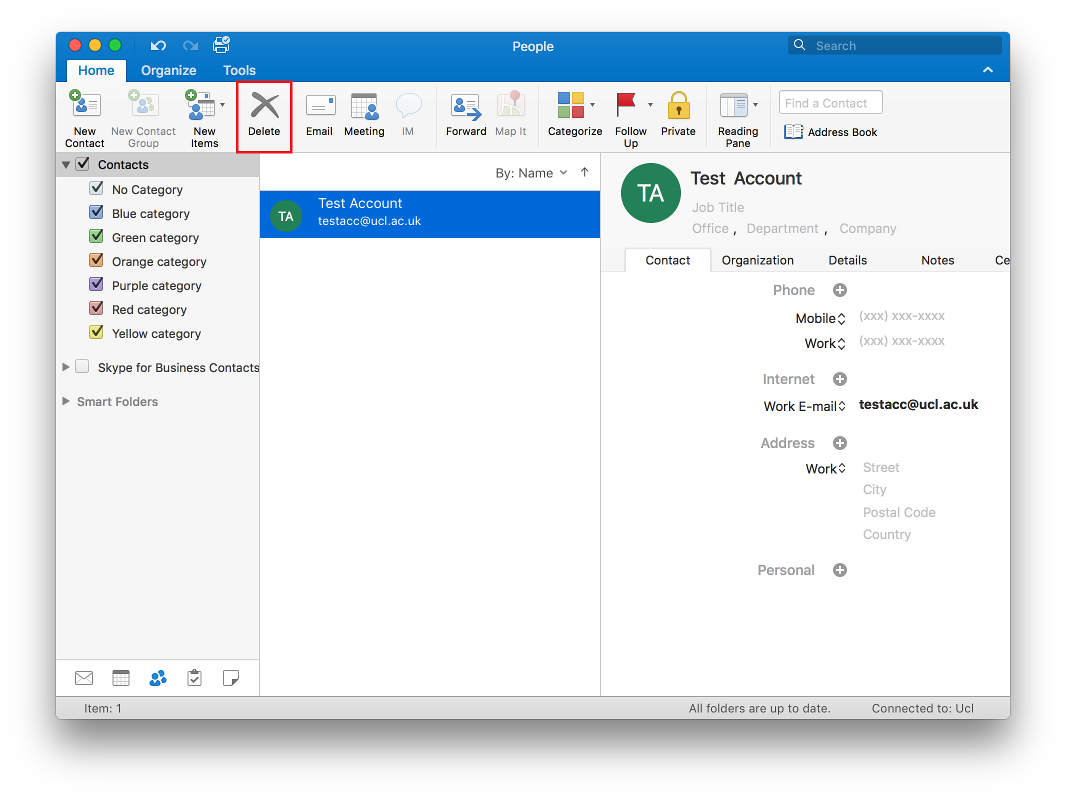

- #Outlook for mac remove recent address to mail password#
- #Outlook for mac remove recent address to mail windows#
Sometimes you’ll need to restart the applications and/or Outlook to actually see it removed from the Recent Items list in Outlook. Recent Office documents can also be removed via Backstage (File button) of the corresponding application (like recent docx files in Word and recent xlsx files in Excel) by right clicking on them and choosing: Remove from list. This basically shows the last 20 entries of the Recent Items folder ordered by last opened.
#Outlook for mac remove recent address to mail windows#
In Windows 10, you’ll find a Quick Access link in the top left corner of the Navigation Pane in File Explorer. The Recent Items list is being fed from the Recent Items or Quick Access list that Windows maintains and there is hardly a way to control it other than editing the Recent Items or Quick Access folder.īy default, you can find the (hidden) folder in the following location:Ĭ:\Users\%username%\AppData\Roaming\Microsoft\Windows\Recent

Controlling what is stored in Recent Items
.svg/1200px-Microsoft_Office_Outlook_(2018–present).svg.png)
New Attach File menu in Outlook 2016 with a Recent Items list and options to insert or link to files from Cloud Storage locations. You can also set this value to 0 to disable the Recent Items list completely. Unfortunately, you can’t directly filter this list but you can control how many items are being shown by setting a Registry value. Is there any way to filter the Recent Items list, limit the amount of files being shown there or get rid of it completely?īy default, and depending on your screen size, up to 12 files are shown in the Recent Items list of the Attach File button in Outlook 2016, Outlook 2019 and Microsoft 365. Most of them are too big to attach anyway. Select an add-in to see more information about it on the right side of the page.When I attach a file, I get list of recent files that also includes movies and songs and other items that I will never email.

Turn on or turn off an add-in by checking or clearing its check box in the Turned on column. Use the options on the toolbar to add more add-ins, uninstall an add-in, or refresh the page to see a list of the latest add-ins. Select Find more add-ins for Outlook at the Office Store to go to the Office Store. On the Manage add-ins page, you can do the following:
#Outlook for mac remove recent address to mail password#
When you’re prompted to sign in, type the email address and password you use to sign in to Office programs. In Outlook, go to File > Manage Add-ins or Manage Apps. Note: If the Reading Pane ( View > Reading Pane) is set to Off, all add-ins will appear disabled. When you're in the main Outlook window (without a new message open), you can access your installed add-ins from the ribbon. When you're writing a new email message ( Home > New Email), you can access other installed add-ins from the Message ribbon. The add-ins that you have installed automatically appear in the gray add-in bar near the top of the message when there is data in the email that is related to the add-in.įor example, when you open an email message that has a street address, you'll see that the add-in's name, Bing Maps, is displayed in the add-in bar.Ĭhoose the add-in to access the data it offers. To get them, you’ll need Office 2013 or Office 2016 and Exchange 2013 or Exchange 2016, and your administrator needs to activate add-ins for Outlook. Note: If you don’t see the Manage add-ins (or Manage Apps) button, you won’t be able to get add-ins for Outlook.


 0 kommentar(er)
0 kommentar(er)
